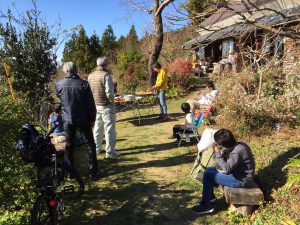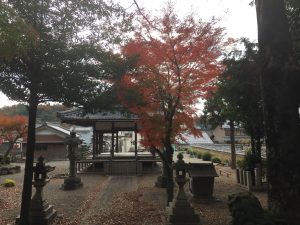Shindofuji: How Far is Local?
Yesterday, I uploaded a new video.
I have been talking about Shindofuji for a while. It means eating locally and seasonally, and therefore one unique aspect of the Ikigai Diet among many diets is it stresses local food and relocalization of your economic activity.
When I say local, what do I mean by it? How far is local?
For some people, local means their municipality. For others, it means their county or prefecture. Even an entire country can be local if it is small, and especially, in today’s globalized food production system.
It also changes depending on where you live, too. If you live in big countries like Canada, the United States, and Australia, the size of regions has a different feeling from people living in countries like Japan or the U.K. For you, an entire state or province can be local, which is about the same size as a country for us.
So, you have your own definition of what local is.
Let me share with you my case today.
I first regard my municipality as local, which is Hino Town in Shiga Prefecture, Japan.
I started a transition town type of activity called the Local Network Hino back in 2013 and I focused on the town of Hino. This is because that was the area where people could move around by bicycle. At that time I was worried about the peak oil and there was a possibility that we wouldn’t be able to drive a car. By building a community within an area where people can move around without using a car, the area would be resilient.
However, now, I am open to expanding the local area to be what is called a bioregion. Bioregion in my interpretation is an area where you can sustain itself by circulating resources within. In the case of Shiga Prefecture, the entire prefecture can be regarded as one bioregion since it consists of mountains which are the sources of rivers all the way to Lake Biwa in the center. All rivers run into the lake and the lake is the mouth of the rivers. To think of a wider economic community, this bioregion is more practical than just Hino Town.
So what I do, as far as how I source my food is concerned, is first I try to buy food produced in Hino as much as possible. Luckily, we can get a lot of vegetables locally since Hino is an agricultural community. Then, if I can’t find something in Hino, I look for foods within Shiga Prefecture.
For ingredients I can’t obtain within Shiga Prefecture, I search for them in Kinki Region, and if they are not available in Kinki, I look for them within Japan. If I can’t get hold of them domestically, I buy imported ones.
The idea here is that do what you can. The Ikigai Diet has a concept of 70% and 30%. That means you stick to your principle 70% of the time but make exceptions 30% of the time. It applies here, too. I try to source my food as locally as possible 70% of the time but make exceptions 30% of the time. There are some ingredients I buy from other countries, too.
I wrote about 70% and 30% in Chapter 12 Adding Hygge to the Japanese Diet in my book.
The bottom line is, don’t become dogmatic about it and think that you have to source your food 100% locally. Doability is important, too and that is how you can continue practicing the Shindofuji diet for a long time.
The Ikigai Diet: The Secret Japanese Diet to Health and Longevity
POD Paperback
https://www.amazon.com/gp/product/4991064864
Kindle

